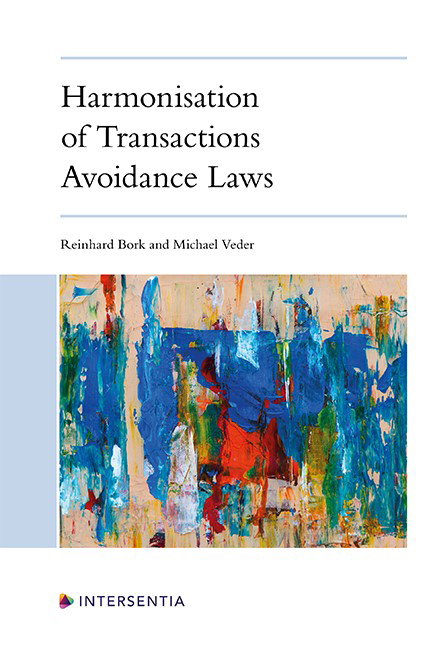Croatia
Published online by Cambridge University Press: 26 May 2022
Summary
PART 1. DETAILS OF YOUR NATIONAL TRANSACTIONS AVOIDANCE LAW
I. SYSTEM
Question 1. Is your transactions avoidance law (for terminology cf. Introduction at C.) part of insolvency law or is it in parts or as a whole incorporated in other fields of law (e.g. general civil law, commercial law, company law)?
Croatian transactions avoidance law is generally part of bankruptcy law. Rules on transactions avoidance law are incorporated in Chapter IV, sec. 3, Art. 198 – 215 and Art. 62.a, para. 1 and 7 of the Croatian Bankruptcy Act.
Note that the Croatian Bankruptcy Act regulates not only liquidation proceedings within the framework of the bankruptcy proceedings, but also reorganisation (restructuring) proceedings by means of a pre-bankruptcy agreement within the pre-bankruptcy proceedings and by means of a bankruptcy plan within the bankruptcy proceedings. Despite this, the Croatian legislator did not want to use the title “Insolvency Act” for no reason other than established tradition.
There is also one rule on transactions avoidance law incorporated in the Act on Procedure of Extraordinary Management in Companies of Systematic Importance for the Republic of Croatia (Art. 39, para. 1 in connection with para. 4). Cf. Question 3.
There is no official translation of these two Acts into English.
Question 2. Are the rules on transactions avoidance law in your jurisdiction the same for entrepreneurs/legal entities and consumers/natural persons? If not, please explain the differences and take it into account when completing this questionnaire.
Yes, the rules on transactions avoidance law in Croatian law are the same for entrepreneurs/legal entities and consumers/natural persons.
Question 3. Are the rules on transactions avoidance law in your jurisdiction the same for liquidation and restructuring proceedings (if any)? If not, please explain the differences and take it into account when completing this questionnaire.
According to Croatian law, restructuring can be made within the so-called pre-bankruptcy proceedings by means of a pre-bankruptcy agreement (Art. 1 – 76 SZ, especially Art. 61 – 62 SZ) or within the bankruptcy proceedings by means of a bankruptcy plan (Art. 303 – 355 SZ).
The rules on transactions avoidance law (Art. 198 – 215 SZ) shall be applied only in the case of the opening of bankruptcy proceedings, no matter whether the opened bankruptcy proceedings aim at liquidation or restructuring.
- Type
- Chapter
- Information
- Harmonisation of Transactions Avoidance Laws , pp. 605 - 644Publisher: IntersentiaPrint publication year: 2022

